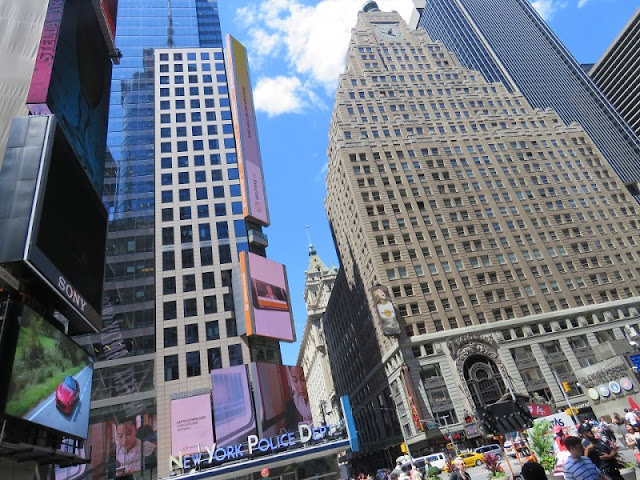Do’s and Don’ts of Cheap Flying
Coupons, regional airlines, and “split fares” can save your money
As the editor and publisher of Best Fares magazine, Tom Parsons has been studying the ins and outs of airline pricing and helping travelers fly cheaply since 1983. Here Parsons gives some money-saving tips:
Do:
Search for and use discount coupons. Parsons says that airlines offer 350 to 400 unadvertised and unpublished travel deals every year. Most can be had by redeeming discount coupons that are distributed by retail outlets and with specific products. An example: people who bought three rolls of Kodak film at a Walgreens Drugstore recently could request a mail-in certificate redeemable for four $60-off coupons on American Airlines. This sort of coupon can usually be used during fare wars to further reduce already low prices.
Look into niche and regional airlines. Several small upstart airlines like Tower, ValuJet, Kiwi now offer services between select areas at very low prices. They concentrate on specific pockets, usually only a handful of cities, and discount prices to make up for their lock of name recognition and to encourage passengers to fly the short haul rather than drive.
Take advantage of “split fares”. Surpirsingly, splitting fares may enable a traveler to combine two cheap tickets for much less than the cost of the original single ticket, especially with the aforementioned rise of niche markets. Rather than buying a single ticket from Dallas to Kansas City, for example, Parsons suggests that a consumer look into flying from Dallas to Tulsa, Oklahoma, and then from Tulsa to Kansas City.
Consider flying to and from alternative cities. Some air routes are significantly cheaper than others. If you are willing to make the journey to and from an out-of-the-way airport before and after a long trip, you be able to save big. A one- or two-hour drive, according to Parsons, can take as much as 70 percent off of a single ticket price. Washington, D.C. flyers should consider making the trek to nearby Baltimore, and Chicago flyers should look into flying by way of Milwaukee.
 |
| Use cheap flights to get to the most beautiful destinations. Photo by Elena. |
Don’t:
Don’t buy tickets immediately. Many discount fares need only be purchased 14 days in advance. Buying sooner may simply mean a loss of future savings. People who buy early can’t get any money back when prices drop. Buy tickets immediately only if you wish to travel during busy holidays like Christmas or New Year’s Day.
Always pick a flight time. Tell travel and reservation agents that cheap is more important, than, say, arriving at nine in the morning. The relationship between time and cost is not always obvious, so you should inquire about the least expensive times to fly a chosen route – sometimes cost more than others, and some special fares only apply at specific times.
The guy sitting next to you paid less:
The price of an airline seat isn’t locked till the plane leaves the ground. Below is a snapshot of what people paid on a recent American Airlines flight from Miami to New York on take0off0the average fare: $196,89.
Coach: $109,26. Advance purchase, usually with a Saturday stayover. $457 Full fare. $118.06. Group rate for meetings, conventions, or vacation packages.
First Class: Frequent flyers using free tickets. $657 Full fare. Empty seats, $379.83. Upgraded fare for passengers frequent-flyers upgrade program.
$129.83. Special fare for senior citizens and government and military employees.
Free: Frequent flyers using free tickets. $260.43. Assorted rate for travel agents, contest winners, promotions, and passengers whose tickets were mutilated or could not be identified.
(Source, American Airlines).
In search of peanut fares: Upstart airlines are making a name for themselves by offering cheap fares on selected routes.
Airsout (hub Columbia, S.C.) Majoir U.S. cities served Atlanta, Jacksonville, Miami, Myrtle Beach, Raleigh Durham, St. Petersburg, Tallahassee.
American Trans Air (hub Indianopolis) Boston, Chicago, Milwaukee, St. Louis
Carnival Air: Doesn’t operate on a hub system. Ft. Lauderdale, Los Angeles, Miami, Newark, New York, Tampa, West Palm Beach.
Frontier: Hub Denver. Alburquerque, El Paso, Fargo, Missoula, Omaha, Las Vegas.
Kiwi International: Hub Newark. Atlanta, Chicago, New York, Orlando, Tampa.
Midway. All flights go through Raleigh-Durham. Boston, Chicago, Fr. Lauderdale, Hartford, Philadelphia, New York, Newark, Orlando, Tamps, Washington, D.C.
Reno Air. Hub: Reno, San Jose. Anchorage, Chicago, Las Vegas, Los Angeles, Phoenix, Portland, San Diego, Seattle, Tucson, Vancouver.
Spirit: Detroit, Atlantic City. Atlantic City, Boston, Ft. Lauderdale, Orlando, St. Petersburg.
Tower Air. Hub New York (JFK). Los Angeles, Miami, New York, San Francisco.
Valujet. Atlanta. Chicago, Columbus, Dallas-Fr. Worth, Detroit, Ft. Lauderdale, Ft. Mayers, Harford, Indianapolis, Jacksonville, Louisville, Memphis, Miami, Nashivlle, New Orleands Oralndo Philadelphia, Raleigh Durham, Savannah, Tampa, Washington, D.C.
(Old News from 1994)

























